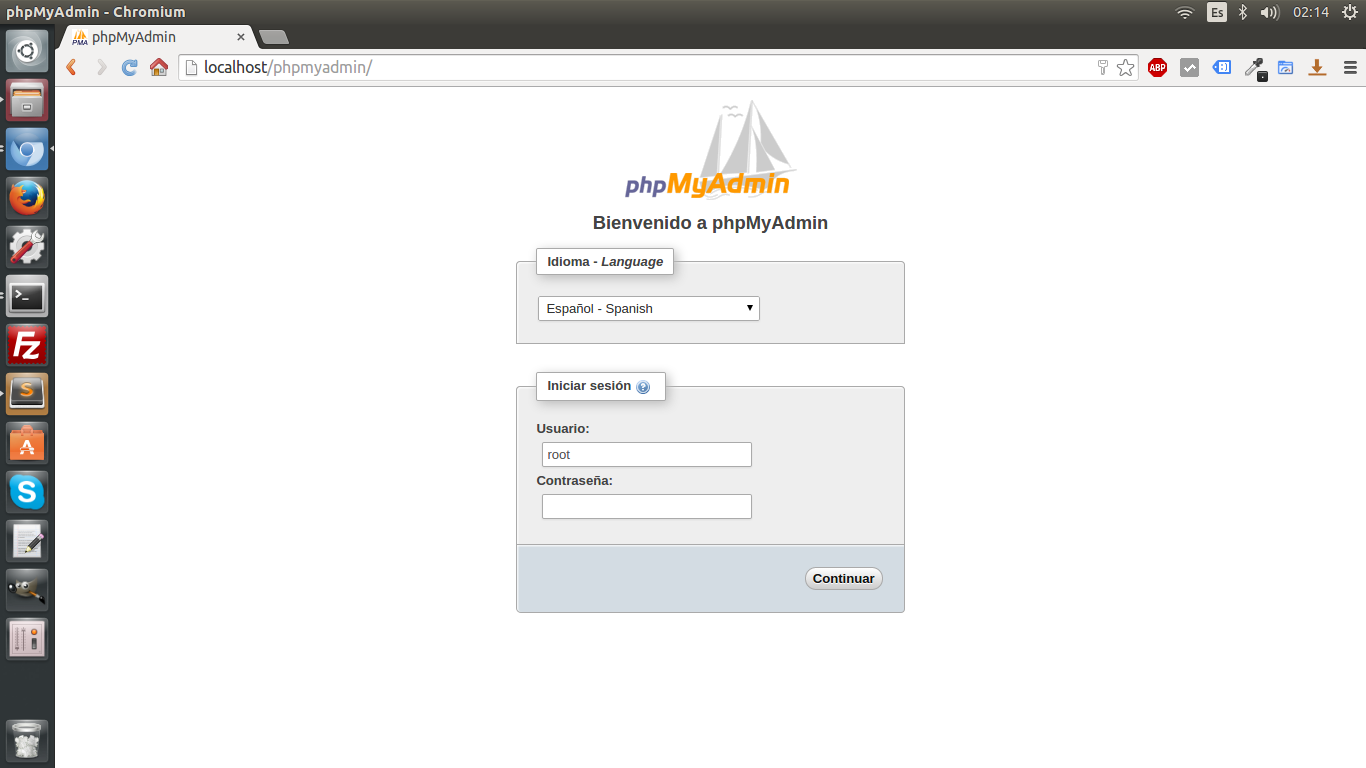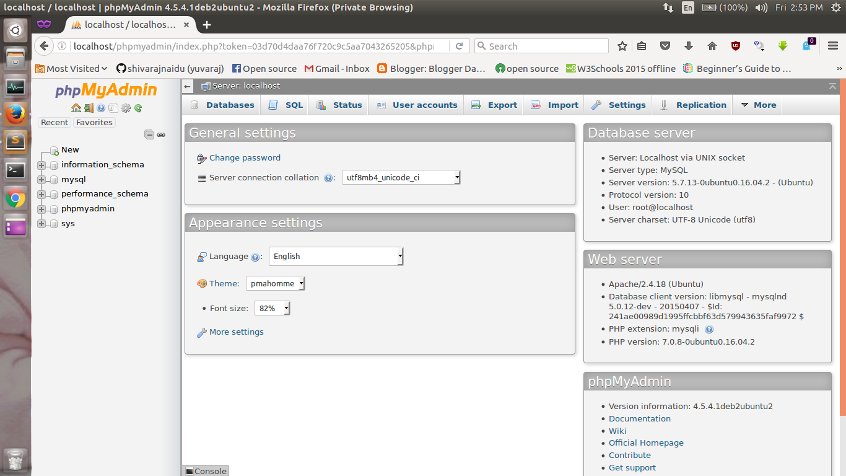
- #Install phpmyadmin ubuntu how to#
- #Install phpmyadmin ubuntu update#
- #Install phpmyadmin ubuntu upgrade#
- #Install phpmyadmin ubuntu password#
#Install phpmyadmin ubuntu how to#
How to install phpMyAdmin on Rocky Linux 8 with ApacheĬategories Ubuntu Tags phpmyadmin, ubuntu, ubuntu 18.04, ubuntu 20.04, Ubuntu 21.04, Ubuntu 22.Install phpMyAdmin on AlmaLinux 8 with Apache.How to Install phpMyAdmin on Debian 11 Bullseye (Apache).Install PhpMyAdmin on Docker to manage MariaDB or MySQL.
#Install phpmyadmin ubuntu upgrade#
In the future, if you want to install any new updates just run the above-given upgrade command. sudo add-apt-repository ppa:phpmyadmin/ppa Here are the steps to follow, for those who want. Hence to get the newer version, we have to add the PPA repo manually. Add a PPA repository for phpMyAdmin (optional)Īlthough there is no need to add an additional repository to install phpMyAdmin on Ubuntu 20.04, it is because we already have its packages available in the Ubuntu official repository. However, the version will not be the latest one. Note: If you forgot which user has been used to access phpMyadmin and what is its password? Then simple edit a file: sudo nano /etc/phpmyadmin/config-db.phpħ. Note: If you want to manage all Database accounts the phpMyAdmin then login with the root user of MySQL or MariaDB.
#Install phpmyadmin ubuntu password#
To log in use username – phpmyadmin and the password is the one you set during the phpMyAdmin dbconfig setup. Now, open a browser on any system that can access your Server Ip address or domain where you have installed the phpMyAdmin. If this is not completed yet, you can follow this guide on. A LAMP (Linux, Apache, MySQL, and PHP) stack installed on your Ubuntu 22.04 server. If it is not running already then execute the below two commands: sudo service apache2 start This server should have a non-root user with administrative privileges and a firewall configured with ufw. phpMyAdmin requires a standalone Database and/or as part of the. Here we are using Apache hence we go for that. In this guide, we will demonstrate how phpMyAdmin is installed on a Ubuntu 22.10 system. Check or Start the Web server on Ubuntu 20.04įirst, check your Webserver whether it is Apache or Lighttpd, is working fine or not. However, if you already have an Apache server installed then it will automatically configure it to use.Ĥ. The PHPMyAdmin automation process will also ask you to select Apache or Lighttpd as a default web server. See: How to access remote MySQL database in local phpMyAdmin

Whereas, those who have a Database server on some other remote machine should go for NO. If you are using a Database server on your localhost where you are installing the phpMyAdmin then type the Yes option to create a database user to use with phpMyAdmin. Now, PHPMyAdmin sudo apt install phpmyadmin The given command will install PHP & its extension along with Apache or Lighttpd web server. It will download, install and configure phpMyAdmin along with the Apache webserver. Now, use the APT package manager to install and configure phpMyAdmin automatically, we can run the following single command. Command to install phpMyAdmin on Ubuntu 20.04 | 22.04 LTS If you already have the database server installed on the server or localhost where you are installing the phpMyAdmin or just want to use the PHPMyAdmin to manage some Database server available on a remote server then you can skip this step.įor MariaDB sudo apt install mariadb-serverģ.
#Install phpmyadmin ubuntu update#
Let’s first run the Ubuntu/Debian update command to refresh the system repository cache. Add a PPA repository for phpMyAdmin (optional) Steps to install phpMyAdmin using PPA repository on Ubuntu 22.04|20.04 1. Installing phpMyAdmin First, log in to your Ubuntu server with root user using your favorite SSH client Next, youll want to update your operating system with. Add # in front of php_admin_value engine off to disable it.7.look for php_admin_value engine off, between and 11 Answers Sorted by: 68 You just need to make a symbolic link to the installation in your server root.



Web server to reconfigure automatically: apache2.MySQL database name for phpmyadmin: phpmyadmin.Password of the database's administrative user: mysqlsamplepassword.Name of the database's administrative user: root.Connection method for MySQL database for phpmyadmin: unix socket.From my experience, I may reach with localhost/phpmyadmin but fail to login, I have to reconfigure phpmyadmin, reset MySQL password, and then I may login without problems.


 0 kommentar(er)
0 kommentar(er)
